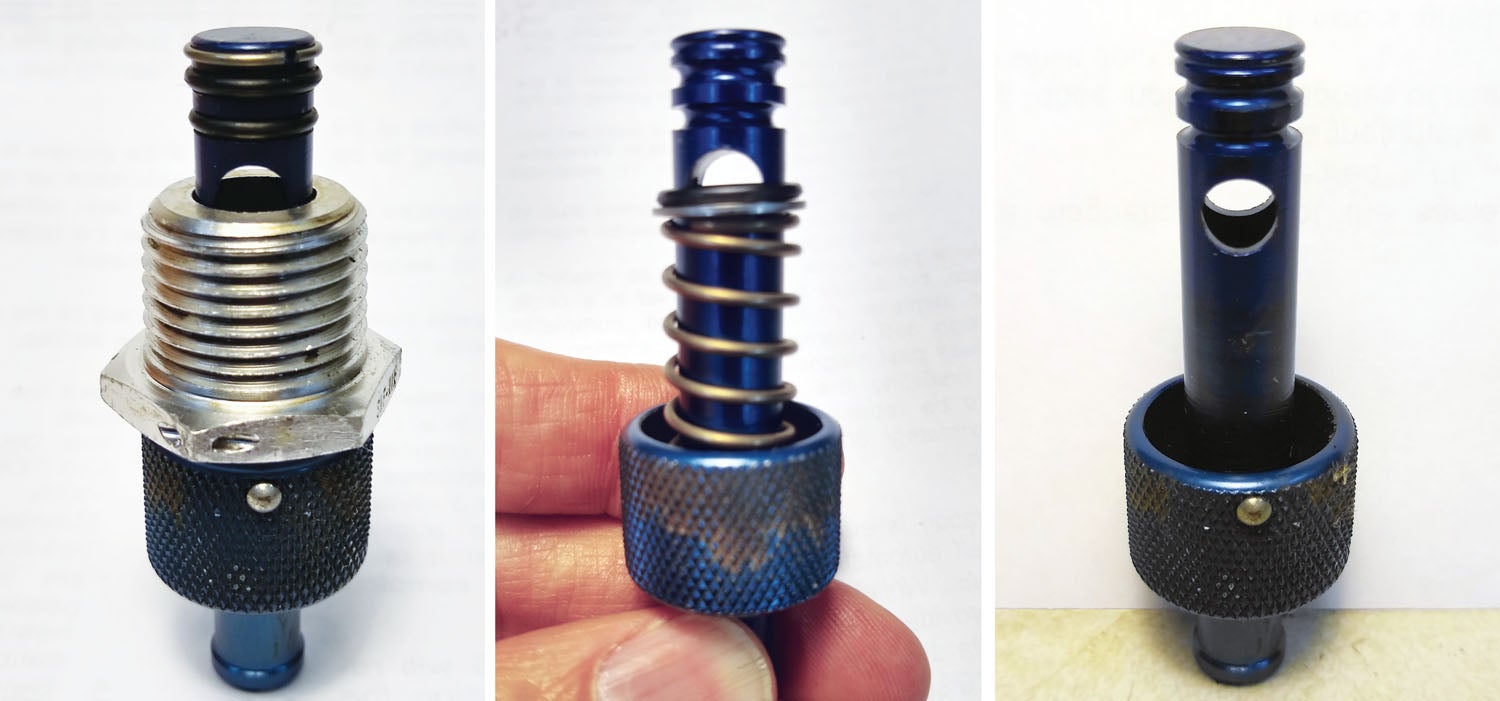 Life got in the way of the last oil change, with the result being that the airplane sat with fresh oil and the cowl off for a couple of days.
Life got in the way of the last oil change, with the result being that the airplane sat with fresh oil and the cowl off for a couple of days.
Returning to button things up, I was surprised to see a puddle of dirty oil on the floor. A quick check with a plumb bob confirmed that the source was the quick drain. This seemed odd because while there was a little bit of oil residue inside the quick drain spigot, there weren’t any obvious drips. Also, it was surprising that the mess on the floor was so dirty, considering the airplane had just been filled with brand-new oil. However, a quick wipe of the floor, followed by another 24-hour wait, yielded a new patch of dirty oil on the floor and confirmed that indeed, the quick drain itself was the source of the leak.
The SAF-AIR Oil Drain Valve is a common way to make oil changes easier. It is spring-loaded to the closed position. Opening the valve requires pressing up with a slight rotation to lock it in the open position, allowing for a tool-free way to quickly drain old oil, either through a hose on the end of the quick drain or directly into a bucket placed on a stool. Using the quick drain avoids having to cut and rewire a drain plug at every oil change. However, after 16 years of service, this one had started to leak.
Removing the quick drain is easy; cut the wire and remove the drain with a 1-inch wrench. With the drain in hand, pressing and locking the valve into the open position is easy, revealing two O-rings on the center neck of the valve with a snap ring at the top. However, there is a third ring hidden inside the assembly, which may not be revealed until the snap ring and two exposed O-rings are removed, allowing the shaft to be removed from the body.

The snap ring can be carefully removed with a small blade screwdriver, gently prying apart the ends of the rings and working it off the shaft. When removing the two O-rings, be careful not to scratch or score the soft aluminum. In my case, heat and time had hardened the O-rings into a state that looked and felt like hard plastic. A dentist’s pick pressed into the side of the O-ring did very little, so the corner of a razor blade was used to carefully cut into the side of the O-ring, causing it to snap into two pieces.
With the snap ring and two O-rings no longer in place, the center shaft can be removed, revealing the spring, a metal washer and a third O-ring, all of which easily slide off the valve shaft.
The two O-rings that sit in the grooves on the upper part of the shaft are MS28775-011 (AN6227B-6). The one that slides on the shaft is MS28775-012 (AN6227B-7). All are available as a parts kit from aviation suppliers, but these same sizes are also contained within most standard O-ring assortments, such as the 382-piece Harbor Freight 67554 ($9 as of this writing).

Replacing the new O-rings is much easier than removing the old ones. Be sure to reassemble the spring, washer and sliding O-ring in the same order as they came off, with the washer protecting the O-ring from the spring. Reinstalling the quick drain in the oil pan is a matter of spreading some thread sealant on the quick-drain pipe threads, tightening it up and then lock wiring it so it can’t loosen. As with any thread sealant, ensure the first couple of threads are kept free of sealant to prevent any possible contamination of the oil in the pan.
The airplane has now been sitting for over 48 hours since the quick drain O-ring replacement and there are no leaks!
I believe the mystery of the dirty oil leaking out of an engine full of clean oil can be explained by oil film continuing to drain off the internal engine components after the old oil was drained and before the new oil was put in. (The oil screen was also removed during the oil change.) This old oil collected at the low point of the system (above the quick drain) and was the first to come out as the quick drain leaked. As an experiment, I drained a little oil after topping up the engine again, and a small amount of dirty oil came out just ahead of the fresh oil behind it.
Another leak source resolved!













